Winter Sunset
Fading slow.
Dark trees, red sun
White snow.
Short the days
And long the nights
Until our earth
Sets things to rights
All the best for the holidays and for 2014

Poet, Playwright, and Artist (1926 – 2008)
Thank you all for joining us on October 20 for the Fourth Annual James Reaney Memorial Lecture to hear David Ferry’s talk on “Directing Reaney: From Black Feet to Main Street.”
Forty years ago on October 20, 1973, David Ferry began rehearsals for the Tarragon Theatre’s production of James Reaney’s Sticks and Stones: The Donnellys Part I. Earlier that summer, director Keith Turnbull and James Reaney workshopped the play in Halifax with actors David Ferry, Patricia Ludwick, and Jerry Franken, along with other actors from the Neptune Theatre.
David spoke about his experiences both acting in and directing the Donnelly trilogy, including The St. Nicholas Hotel and Handcuffs. Questions from the audience included what attracts actors to the plays, what are the prospects for future professional productions, and whether each play truly stands alone outside of the trilogy.
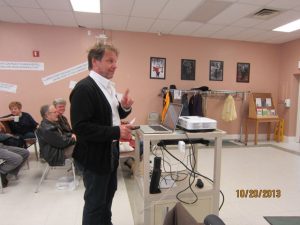
Many thanks to the organizers of the lecture at the Stratford Public Library — Charles Mountford, Anne Marie Heckman, and Sam Coghlan — for your continued support of this event.
Next year’s speaker will be Tim Inkster, publisher at Porcupine’s Quill. See you then!
Here are photos David Ferry shared from his production of Sticks and Stones at Bishop’s University in March 2013.
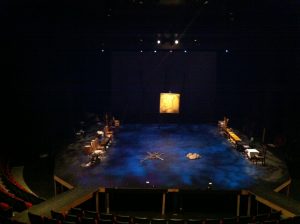
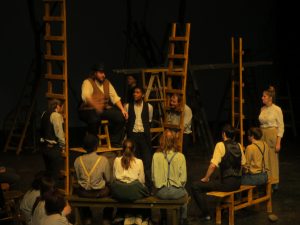
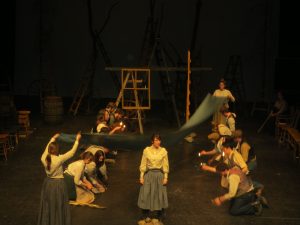
On October 17 at the London Public Library (7:00 pm), Thomas Gerry will speak on his new book The Emblems of James Reaney.
Former doctoral student of James Reaney’s and now professor of literature at Laurentian University, Thomas Gerry explores the history of the literary emblem, and explains the meanings behind ten of James Reaney’s emblem poems.
“The Tree” and “The Riddle” are two of Reaney’s emblem poems featured in The Emblems of James Reaney:
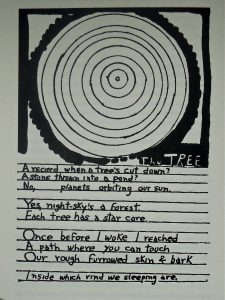
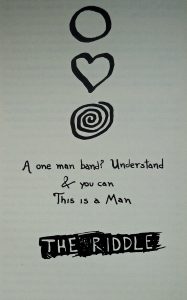
On the same evening, Tom Smart, author and former executive director of the McMichael Canadian Art Collection, will read from his new book Jack Chambers’ Red and Green. Red and Green is a collection Jack Chambers (1931-1978) made of hundreds of quotations that set out his ideas on art and the nature of reality.
Both The Emblems of James Reaney and Jack Chambers’ Red and Green are available from The Porcupine’s Quill.
For more about the book launch, see JBNBlog‘s review.
Join us on Sunday, October 20 at 2:30 pm at The Stratford Public Library Auditorium in Stratford, Ontario, for a talk by actor and director David Ferry on “Directing Reaney.”
David Ferry was one of the original cast members of James Reaney’s The Donnellys Part I, Sticks and Stones, which was first performed in 1973 at the Tarragon Theatre in Toronto, Ontario. He has won Dora Mavor Moore Awards for both his acting and directing, and recently directed James Reaney’s Sticks and Stones at Bishop’s University in March 2013.
The annual lecture is a project developed by The Stratford Public Library and Poetry Stratford, and features a talk by a person who is knowledgeable about the life and work of Stratford poet and playwright James Reaney and of writing in the Southwestern Ontario region, which is such a strong element in Reaney’s writing.
The Stratford Public Library is located at
19 St. Andrew Street,
Stratford, Ontario
N5A 1A2.
Department Store Jesus
May I help you? You want a Jesus?
We have a different style for each of our four
Floors, for
Example, in the basement we stock the demonic Jesus
with the hardware & the mousetraps and the col
-chicum bulbs & the rat poison.
Demonic Jesus, yes—
As portrayed in Martin Scorsese’s film where Christ giggles,
An efficient young carpenter apprenticed to his dad,
Helps his father make crosses for the Romans to use.
As portrayed in a Handmade film bankrolled by one of the Beatles
He says: “Blessed are the Cheesemakers”
And his much more attractive rival is a well-endowed male,
Amiable, but not too interested in changing the world,
Named Brian.
Now, let’s take the escalator
To the First Floor where you may prefer
Christ as He really was,
Classified with Kodak film, notions, perfumes,
Stationery & Men’s Wear.
This historical Jesus is made up of verifiable only facts,
Of which there are practically none;
Do you know there is a serious doubt that he even existed,
But finding his grave would help.
They’ve just found that of Caiaphas, the Chief Priest of his time.
The archeologists are busy.
Water-walker, speed baker & fisher? Virgin birth?
We’ve scrubbed him clean of all that midrash rubbish.
After all, can you cure leprosy, blindness & death
That easily?
Meanwhile, a monastery in Turkey has coughed up
A rather interesting Gnostic scrap with regard to
A hitherto obscure passage—Mark IX: 51, 52.
At last our suspicions about his sexuality may be—
Explained.
Let us take the Elevator to the Second Floor
Where the Christ of the creeds & the New Testament
Is still available
(Buyers, not many lately)
Among the patterned china, the records for gramophones,
The furniture & dining room suites.
Now this model was born to a Virgin, raised the dead,
Often corpses not so recently deceased,
Bent reality with his magic, died,
Then, like Snow White, came alive again:
Dared to be a crucified wretch on a cross;
Somehow destroyed & renewed a large empire,
Is, no doubt, our only hope for translating us out of here.
But, you know, we get a lot of returns
And customers asking for something really true this time,
Not so exciting & poetic, more real.
A man who walks on rain
Is too great a stretch for their brain.
Others say they are more than happy, but you can tell
They’re not by the funny look in their eyes,
And, of course, we provide a booklet, one of many,
Just in case your difficulty is, say, the Ascension,
Speaking of which, let us climb these stairs
Up to the roof of this Department Store.
On the roof of this Department Store
Having a cigarette on his break,
I saw a young floorwalker
Leaning against the elevator shaft.
By the sudden flash, I recognized Him,
Yes, by the moment glimpse
Of the nailmarks
On His hands.
James Reaney, 2005
“Department Store Jesus” is from Souwesto Home, a collection of James Reaney’s poems from 2005 and published by Brick Books. Listen to Jeff Culbert perform “Department Store Jesus” and other poems from Souwesto Home here.
It is the rutting season
At Grand Bend
And the young men and the women
Explode in each other’s arms
While no chaperons attend.
By this furious activity
Of the loin
No children are conceived
For they have avoided this.
While the sun
Sprays everyone with iodine
And old men sit
Upon the dirty beach
With great bellies big
Not with child
But with creamed asparagus
And to somewhat more disgust
Someone has spilt a bottle of scent.
Crazily the cheap sweetness
Leaps through the air
Making some think of something decaying
And others of stenographers in the rain
And another to say giddily,
“How violent, at Grand Bend this year,
How violent the violets are!”
James Reaney, 1949

Issue 72 of Devil’s Artisan features Gasperau Press owner Andrew Steeves’ account of his journey in September 2012 from Black River, Nova Scotia to Linotype U, a symposium on the art of linotype printing, in Denmark, Iowa. On the way there and back he visited as many letterpress print shops as he could, including The Porcupine’s Quill in Erin, Ontario.
Tim [Inkster] took me over to the PQL warehouse (located in the basement of the building next door) to show me what he felt should be the first press photographed on my journey. Not his own Heidelberg KORD 64 offset press (the model also used at Coach House Books in Toronto and at Gaspereau Press), but rather a small Nolan proof press that once belonged to the poet James Reaney. Reaney is perhaps best known as the editor of Alphabet, an innovative literary journal he published in London, Ontario, between 1960 and 1971. Early issues of the publication were set and printed by Reaney himself, though it is doubtful that this particular little press was used in the production of the journal for anything besides proofing type. I was glad of Tim’s suggestion, for it would turn out that Nolan proof presses would keep popping up everywhere along my route.
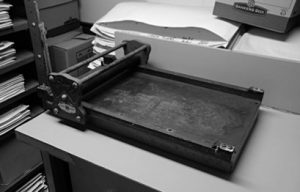
Andrew Steeves is the co-owner of Gaspereau Press in Kentville, Nova Scotia. Tim Inkster of The Porcupine’s Quill is the publisher of several titles by James Reaney, including A Suit of Nettles, The Box Social and Other Stories, and The Essential James Reaney.

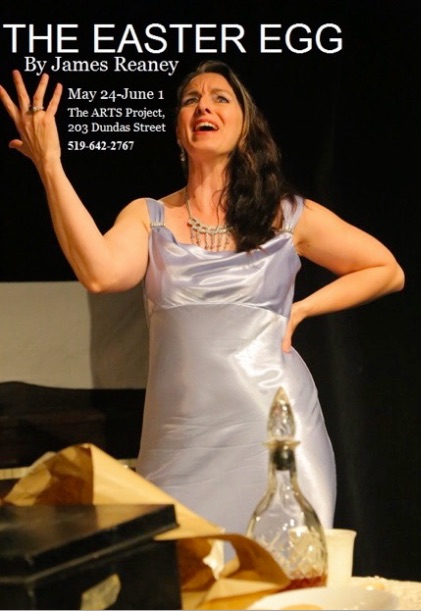
A new London production of The Easter Egg runs May 24 to June 1 in London, Ontario, produced by the Alvego Root Theatre Company and directed by Jason Rip. Here are James Stewart Reaney’s thoughts on his father’s play.
When James Reaney was given the chance to talk about the play, a 1962 comedy, he always worked in important details. The Easter Egg was a “neat, tidy” play with a few characters and it was relatively short.
“All I was trying to do, at the time, was create a short, little play with only a few characters.” he told former Free Press colleague Noel Gallagher decades after the play’s premiere at Toronto.
The occasion was the 2002 revival of The Easter Egg by a Toronto company. Their production came to London the next year.
Back in the 1970s, he had used that “neat, tidy” phrase to describe the play he wanted to write for a favourite director and collaborator, the late Pamela Terry.
Once, when we talked about it, he said he had wanted to answer critics who said he could only write a drama on the long and epic scale of The Killdeer, his first major play. Still, short in stage time meant coming in at 113 minutes — by his count — Easter Egg intermissions not included. He also wanted to write something absurdist, where “things just happened.”
These thoughts, and more, have been swirling around on the eve of a new London production of The Easter Egg. The AlvegoRoot company staging opens May 24.
Eagerly anticipated in My London, the 2013 production follows at least two other Easter Eggs here. The Free Press reviewer in 1967, Helen Wallace said: “The Summer Theatre production . . . tells a story, on its most superficial level, of a mentally disturbed boy (Kenneth Ralph) hidden away so his stepmother (Bethel Henry) can claim his inheritance . . . the psychiatric tangle of a 20th-century Cinderella theme is twisted against the secret Victorian shame of a ‘different’ child who has to be hidden away.”
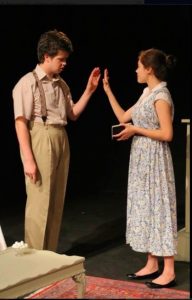
That perceptive comment accounts for the play’s basic conflict. On Kenneth’s side are Bethel’s stepdaughter Pollex (Polly) Henry and Dr. Ira Hill, who is pursuing Bethel. Tending to ally himself with stepmonsterish Bethel is the Rev. George Sloan. The faith leader really should be standing by Polly because they’re engaged, more or less. The cruel and weak Sloan is probably overwhelmed by the endlessly comic caustic chatter from the tireless schemer Bethel.
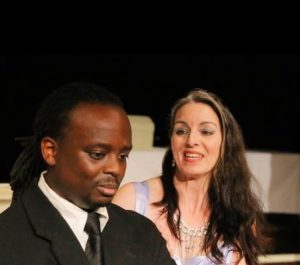
“Among other mysterious elements in the mix are the bat (‘a flying mouse’) that stalks the house; a young girl’s ghost haunting the garden; a cat’s skeleton and a metal box containing a glass Easter egg,” Gallagher wrote in his review of a 2003 production. True — and it was an Easter egg from my father’s beloved collection which served as a prop all the way back in the Terry-helmed 1962 debut.
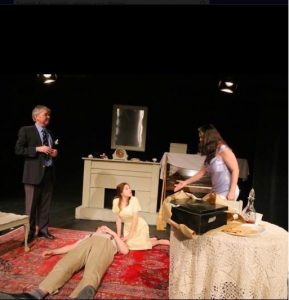
Re-reading Gallagher’s story from 2002 makes me smile because, as an interviewer, he drew out charming and characteristic details.
“Easter Egg’s still one of my favourite plays because it mentions Paradise, Manitoba, which is where my father once worked as a farmhand,” my father said at one point.
Then, there was his loyal salute to the play’s successful world premiere at Toronto’s Alumnae Theatre in 1962. Just as typical and true to my father’s character was his brusque dismissal of an Ottawa production soon after as “a dreadful failure.” That comment carries the eye-watering sting of burned-bridge aroma No. 1 — guaranteed to linger forever.
Best of all is his praise, wearing the mask of the practical playwright, for the 1964 version staged by a United Church group in Woodstock. “They were raising money to build a gymnasium and The Easter Egg helped them reach their goal,” my father said.
What: Revival of The Easter Egg by London poet and playwright James Reaney (1926-2008) by AlvegoRoot Theatre Company.
“A Canadian Classic. The Easter Egg starts with Gothic darkness and builds to a beautiful conclusion of new beginnings.” — AlvegoRoot
When: Opens Friday, 8 pm and continues to June 1.
Where: The Arts Project, 203 Dundas St.
Tickets: Call The Arts Project box office at 519-642-2767.
Adults $15 and $10 seniors/students
Here’s a selected look at past presentations of The Easter Egg in London:
March 2, 1962: Rehearsed reading by Western staff and students.
July 4-7, 1967: Production directed by Pamela Terry at then-new Talbot College stage.
Jan. 17-19, 2003: Staged by TH&B Company, directed by David Eden at Grand’s McManus Studio Theatre.
For more about the 1967 production of The Easter Egg at Talbot College, see JBNBlog. For a review of AlvegoRoot’s The Easter Egg, see The Beat Magazine.
On May 24 to June 1 in London, Ontario, come and see the AlvegoRoot Theatre Company’s presentation of James Reaney’s play The Easter Egg.
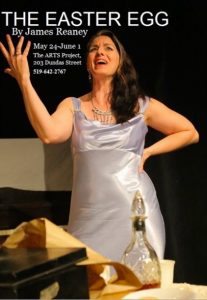
The Easter Egg is directed by Jason Rip, and the performers are Kim Kaitell, Adam Corrigan Holowitz, Maya Wong, Demis Odanga, and Chris McAuley.
Jason Rip is a former student of James Reaney’s and an admirer of his work: “I feel very fortunate to have known Mr. Reaney. My ideas about him and his unique way of looking at the world — alternately whimsical and threatening, dignified yet naughty, with an emphasis on the importance of play — have infused this production. I still remember him hiding behind the curtains in University College Tower, waiting to pounce out and scare students. ‘GOTHIC NOVEL!’ he’d shout before doubling over with giggles. James Reaney is the bard of Souwesto. I will never turn down a chance to direct or appear in his work.”
When: May 24, 25, 29, 30, 31 and June 1 at 8pm; May 25 and June 1 at 2 pm
Where: The Arts Project, 203 Dundas Street, London, Ontario
To buy tickets, call 519-642-2767; Adults $15, Students and Seniors $10.
Pamela Terry Beckwith (1926-2006) directed James Reaney’s The Killdeer in 1960. He always referred to her as “my first director,” and he dedicated his second play, The Easter Egg, to her. She directed the first production of The Easter Egg for the Alumnae Theatre in November 1962.
Here are James Reaney’s thoughts about The Easter Egg from the Preface to the anthology Masks of Childhood (New Press, 1972, pages v-vi):
Behind Easter Egg literally lies a collection of glass Easter eggs I made from 1945 to 1955, aet. 19 and over. Found my first one in a store on Harbord Street, an old grocery and sundries store out of the 1910 era.[…] In Stratford, Le Souder’s Second Hand Store also kept getting a supply as attics from the eighties and nineties descended to the auctioneer’s gavel. Have never been quite sure of their cultural use; I think they were given to children at Easter. Some of them are as small as hen’s eggs and I have heard of these being used as nest eggs; others are large — a bit larger than a goose egg. Could they have been made at the Hamilton Glass Works? […] Milk glass blown or moulded, painted with flowers, rabbits, chickens (a cherub hatching out of one I didn’t buy), glowing with trapped pearly light — such glass cannot fail to set the story-telling instinct free. So a godmother gives a boy a glass Easter egg; he is drowning in an evil world and the present could float him to a shore. Someone steals the egg and the boy goes under a wave of word-blindness and numbness. Fourteen years later the Easter egg is found again and….
Bethel and her setting were suggested by stories told at an academic party in Kingston; stories about the past on a campus somewhat farther east. Nearby Garden Island supplied the ghost story of a girl tied to a fence for stealing a twig of small fruit. To my astonishment I ran across the basic for the story in the London Times,* 9 October, 1846 (No. 84). I think the heading is ‘Gooseberry Case on Garden Island’ and the owner of the gooseberries had the child brought up in court for stealing one! Confinement beneath a cellar door rather than tying to a fence was the cruelty practised.[…] I know perfectly well that in real life no one marries somebody because she got him to kill a bat; but here, in this story, they do you see.
*[London, Ontario, or London Minor as it was sometimes called.]
Thanks to Brick Books, you can now hear Jeff Culbert reading poems by James Reaney from Souwesto Home (2005) and One-man Masque (1960).
One-man Masque (1960) is available in Two Plays by James Reaney, as well as Gentle Rain Food Co-op (1997), published by Ergo Books in 2003.
Listen to Jeff Culbert read a selection of poems here:
Actor and director Jeff Culbert performed One-man Masque and directed James Reaney’s 1997 play Gentle Rain Food Co-op on November 21-30, 2002 at the Grand Theatre (McManus Studio) in London, Ontario. In the preface to his book, Two Plays, James Reaney shared his enthusiasm for Jeff Culbert: “His superb work as both director and performer moved the audiences at seven performances… to stand-ups, tears, laughter, and exclamations. There were even screams for the last image of One-man Masque when Jeff took a tray of five candles, lit them, and balanced the tray on his head! It was electrifying.”